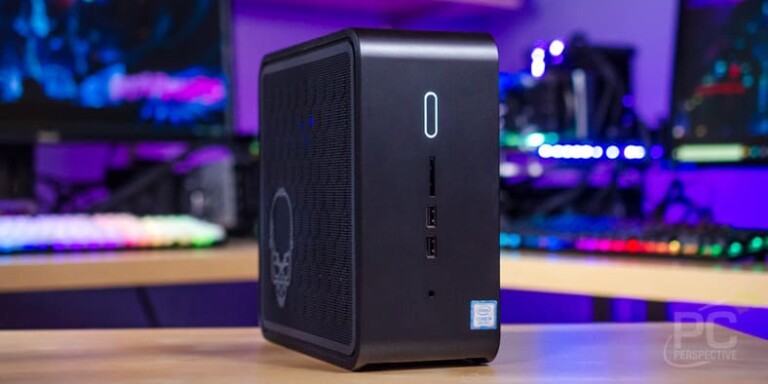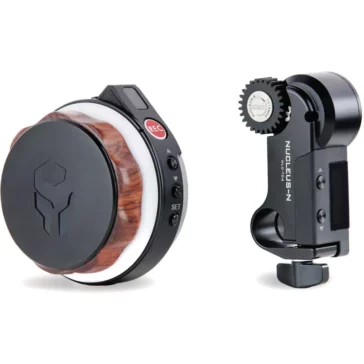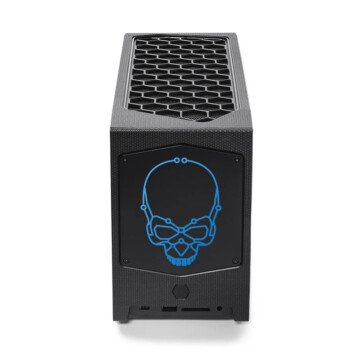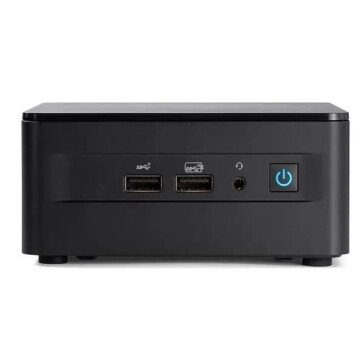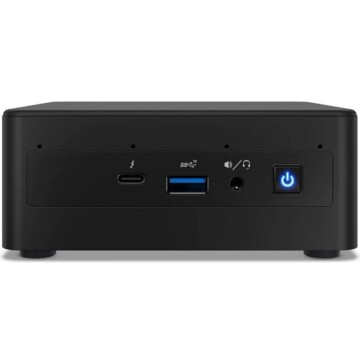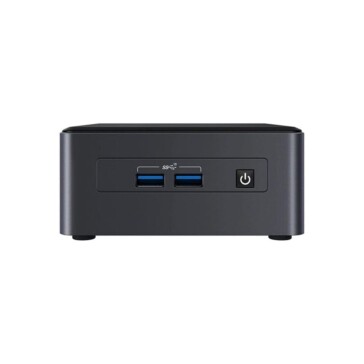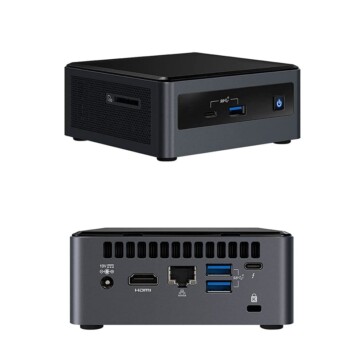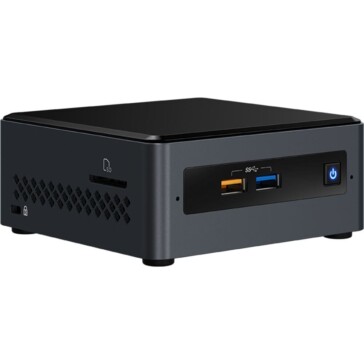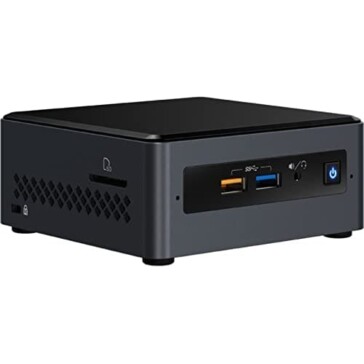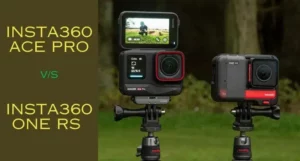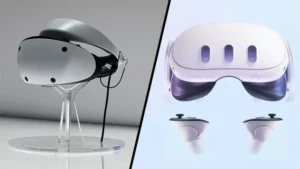We will dive into the realm of NUCs (Next Unit of Computing) in this extensive article
and give you a thorough grasp of what they are and how to get one. Due to their
small form factor and powerful performance, NUCs are adaptable, small, and
portable. This article will be your go-to guide if you are a tech enthusiast, a
professional seeking a portable workstation, or just someone who is curious about
the most recent developments in technology. So let’s investigate the intriguing world
of NUCs and learn how to configure them, including the necessary wires and
memory cards.
What is a NUC?
Next Unit of Computing, or NUC, is the name of a small-form-factor computer
system created by Intel. Despite being compact, these powerful gadgets have a lot
to offer. NUCs are made for providing a full computing experience while taking up the
least amount of space possible. They are perfect for a variety of applications,
including home entertainment centres, digital signage, office workstations, and even
gaming settings, thanks to their exceptional performance, flexibility, and energy
efficiency.
NUCs are incredibly portable and easy to integrate into various situations thanks to
their small size. They frequently arrive as barebone systems, which means that you
must add extras like memory, storage, and an operating system to finish the
configuration. Users can modify their NUCs in accordance with their unique needs
and financial constraints thanks to this versatility.
-
Sale Product on saleTilta Nucleus-Nano Wireless Focus Control System
₹27,990Original price was: ₹27,990.₹25,699Current price is: ₹25,699. incl. GST -
Sale Product on saleIntel NUC 12 Core i9 12th Gen Extreme Dragon Canyon Mini Desktop Gaming Computer, RNUC12DCMI9000
₹175,000Original price was: ₹175,000.₹103,250Current price is: ₹103,250. incl. GST -
Sale Product on saleIntel Nuc 12 Core I3-1220p Essential Kit With Processor, RNUC12WSHI30000
₹50,000Original price was: ₹50,000.₹28,999Current price is: ₹28,999. incl. GST -
Sale Product on saleIntel NUC 11 Core i7 11th Gen Mini PC, Barebone, RNUC11PAHI70Z00
₹83,600Original price was: ₹83,600.₹44,999Current price is: ₹44,999. incl. GST -
Sale Product on saleIntel NUC 11 Core i3-1115G4 11th Generation Pro Kit, Barebone, NUC11TNHi3000
₹39,990Original price was: ₹39,990.₹31,999Current price is: ₹31,999. incl. GST -
Sale Product on saleIntel NUC 10 Core i5-10210U 10th Gen Performance Kit, Barebone, NUC10i5FNHN
₹51,000Original price was: ₹51,000.₹22,750Current price is: ₹22,750. incl. GST -
Sale Product on saleIntel Pentium Silver J5040 NUC Kit Barebone Desktop Computer, NUC7PJYHN
₹22,990Original price was: ₹22,990.₹14,990Current price is: ₹14,990. incl. GST -
Sale Product on saleIntel NUC 7 Celeron Processor J4005 Essential a Mini PC with Windows 10, Barebone, NUC7CJYSAMN
₹23,400Original price was: ₹23,400.₹12,500Current price is: ₹12,500. incl. GST -
Sale Product on saleIntel NUC Kit Celeron J4005 Processor Barebone Desktop Computer, NUC7CJYH
₹20,000Original price was: ₹20,000.₹11,799Current price is: ₹11,799. incl. GST
Choosing the suitable NUC
It’s essential to think about your needs and intended use of the device when
purchasing one. There are numerous NUC versions available from Intel, each with a
different use case and performance level. The following are some things to take note
of when selecting the best NUC for your needs:
- Performance:
NUCs are available in an assortment of configurations, from low-cost variants
with Intel Celeron or Pentium CPUs to high-end models with Intel Core i3, i5, or
i7 processors. Based on the tasks you intend to conduct on your NUC,
determine the degree of performance you require. - Graphics:
Considering a NUC with integrated Intel Iris Xe or discrete graphics selections is
a smart choice if you enjoy gaming, video editing, or other graphically
demanding tasks. Smooth gaming and improved visual performance are
provided by these graphics solutions. - Connectivity:
Verify the NUC’s connectivity options and available ports. You should make sure
it has the USB, HDMI, DisplayPort, Ethernet, and audio jacks that you’ll need for
your accessories. Checking for support of Bluetooth and Wi-Fi can also be
helpful for wireless connectivity. - Storage and memory:
Analyse your memory and storage needs. M.2 SSDs, which provide quicker data
access and startup times, are supported by some NUC variants. Also, take into
account how much RAM you’ll need to operate your selected applications
efficiently. There are many ranging selections from 4 to even 16 GB RAM. - Form Factor:
NUCs come in a variety of form factors, including the more compact “slim” or
“mini” form factors as well as the more conventional “tall” design. Pick a form
factor that works with your aesthetic preferences and space constraints.
Setting up your device - Round up the required components:
Once you do buy a NUC, you have to buy all of the other components of the
machine yourself.
To complete the NUC setup, you will need the following items:
NUC Kit (including the chassis and motherboard)
Processor (already included in the NUC kit)
Memory (RAM)
Storage (M.2 SSD or 2.5-inch SATA drive)
Operating System (such as Windows or Linux)
Power Adapter (included in the NUC kit)
High-speed category HDMI cables
Ensure you have all the necessary components before proceeding. - Assemble the NUC:
It is preferable if you follow the manufacturer’s instructions to assemble it. In
most cases the motherboard must typically be fastened within the chassis, the
power supply must be connected, and any additional memory or storage
modules must be fastened. It is a fairly basic ordeal and it will be up and running
in no time. - Install Memory and Storage:
Put the RAM modules in the motherboard’s allocated slots. if you’re using an M.2
SSD Locate the M.2 slot on the motherboard, and then install the drive.
Alternatively, you might attach a 2.5-inch SATA disc to a free SATA port if you’re
utilising one. - Connect Cables:
It is time to connect all the required cables.
Start off with the power cables, then the display cables(HDMI or DisplayPort),
attach a keyboard and a mouse and any other accessories you may want to use
in your setup. - Configure the BIOS settings:
Use your NUC’s BIOS settings to make sure everything is working and
compatible. Instructions for gaining access to the BIOS and configuring various
parameters can be found in the manufacturer’s literature. BIOS is basically what
will help you navigate and use the device up until when you decide to add the
OS. - Install Drivers and Software:
Install the needed drivers and software specific to your NUC model after the
operating system installation is complete. In order to find the most recent drivers
and any suggested software updates, go to the manufacturer’s website.
In conclusion, NUCs are a compelling choice for people looking for robust computing
capabilities in a small and customizable form factor. You may build a flexible
computing setup that satisfies your demands by being aware of what NUCs are and
carefully choosing the best model for your purposes. As you set up your NUC, make
sure you have all the cords and components required for a smooth process by
following the instructions provided in this tutorial.
Keep in mind that NUCs are flexible hardware that can be used for a variety of
purposes. NUCs offer a great solution that can handle your needs, whether you’re a
tech enthusiast, a professional, or someone trying to optimise their workspace. Take
advantage of NUCs’ power to open up new opportunities.
